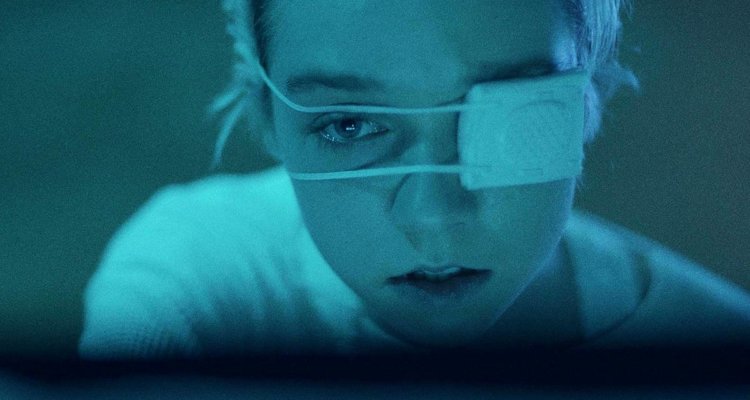Anthony Scott Burns–filmmaker, musician, and half the team behind “Our House”–branches into science fiction with the eerily hypnotic “Come True,” starring Julia Sarah Stone. Take some Wes Craven, fold in David Cronenberg, sprinkle on a bit of Carl Jung and Philip K. Dick, and you get “Come True,” which imagines a not-so-distant future in which dreams are studied like math problems.
READ MORE: The 25 Most Anticipated Horror Movies Of 2021
Like Nancy Thompson, nearly 40 years ago (“Nightmare On Elm Street“), the dreams are always the same for a runaway teen, Sarah (Stone), who sleeps on a playground and drinks caffeine to stay awake. When you see the large, shadowy figure with yellow eyes in her nightmare, you’ll understand why she chugs three cups of coffee a day. Sleep is not peaceful for Sarah, and she’s starting to break.
READ MORE: The 100 Most Anticipated Films Of 2021
So when she spots a flyer at the coffee shop for a sleep study, she heads right over. It seems legit, with doctors and volunteers and hospital beds. But she soon questions what’s really going on, the synth-y score hinting at something more sinister, the Brutalist architecture hinting at something more perverse than the “sleep paralysis” study she signed up for.
READ MORE: The 25 Best Films Of 2020
The study is actually a ploy to get inside her dreams, to map the ruins of her fractured psyche. The camera glides across misty graveyards and leafless trees, up ancient steps, and into abandoned buildings, where the figure with yellow eyes awaits. It’s what the doctors are looking for, whatever the hell it is. And they are willing to do whatever it takes to find it.
With “Nightmare on Elm Street” overtones, “Come True” is a cerebral horror flick that also feels very independent. Burns not only directed, but he also wrote, edited, scored, and produced, using only five cast members and a sub-million dollar budget. He even appears a few times, along with production designer Nicholas Berchard, so that they could fill out the script with more characters. There’s also a good deal of location shooting at the University of California San Diego, which saves money, yes, but makes it look like a student film for anyone who has spent a few on campus.
What makes “Come True” work is the relatable fears and worries it plays on–we all have nightmares: How long until they become a reality? How long until corporations can tap into our minds the same way they tap into our phones, televisions, and computers? What then?
Another crucial element is Sarah Stone’s performance. As a high school student, she is lonely and vulnerable. But earnest, desperate, and ready to fight back, she becomes both a Final Girl and Damsel in Distress.
“Come True” is a surreal, mysterious, and efficient mix of science fiction references with an original ending. It lulls you into its rhythms with a disjointed narrative and a seamless flow of editing, cinematography, and rock-a-bye-baby pacing. Like a nightmare itself, you won’t be able to snap out of it until the strange, impossible-to-describe scenario has run its course. [B]

